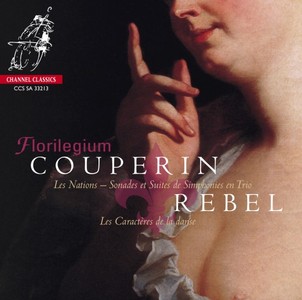Solomon, A. and Charlston, T. (2013) Couperin: Les Nations and Rebel: Caractères de la Danse. [Audio]
Abstract
François Couperin's Les Nations (La Françoise and L’Espagnole), and Jean-Féry Rebel's Caractères de la Danse, performed by period instrument ensemble Florilegium. The two composers presented on this recording both came from families of musicians active at the Court of Versailles. François Couperin entered the service of the King as organist of the Chapelle du Roi in 1693. He progressed rapidly and within a year he was ap- pointed harpsichord teacher to the Duke of Burgundy and most of the royal children. In 1696 Louis xiv ennobled him and a few years later he was made a Chevalier of the Lateran order. In the early part of the 18th century he composed a considerable amount of church music for Versailles. At this time he also regularly composed chamber music for the Concerts du Di- manche series at Court and by 1717 he had officially succeeded d’Anglebert the younger as the Ordinaire de la Musique. He had been exerting his influence and control of this position for some time before 1717 and had already succeeded in having a number of outstanding musici- ans in his charge, including the viola da gamba player Forqueray and the violinist Rebel. By 1710 Couperin’s contemporaries were already referring to him as Le Grand and many of his disciples had already dedicated compositions to him. In 1713 he took out a privilège du Roi in order to publish his works, printing his first book of harpsichord pieces, which had been written over the previous fifteen or so years. In 1716 he published his theoretical treatise L’Art de toucher de la Claveçin and his second book of harpsichord pieces then followed in 1717. After the death of Louis xiv (1715) he published some of his instrumental works under the title Les Goûts Réünis and the success of these encouraged him to publish some of his earlier sonatas originally from around 1692 and in the Italian style. To these sonatas he added a set of dances or suites in the French manner and titled the whole collection Les Nations, which appeared in 1726.
Actions (login required)
 |
View Item |


![[img]](https://rcm-uat.leaf.cosector.com/1196/1.hassmallThumbnailVersion/cover_r500x500.jpg)